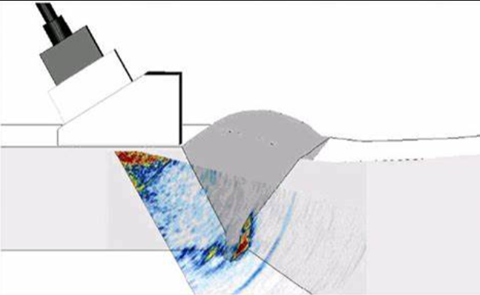超声相控阵是超声探头晶片的组合,由多个压电晶片按一定的规律分布排列,然后逐次按预先规定的延迟时间激发各个晶片,所有晶片发射的超声波形成一个整体波阵面,能有效地控制发射超声束(波阵面)的形状和方向,能实现超声波的波束扫描、偏转和聚焦。它为确定不连续性的形状、大小和方向提供出比单个或多个探头系统更大的能力。
超声相控阵检测技术使用不同形状的多阵元换能器产生和接收超声波束,通过控制换能器阵列中各阵元发射(或接收)脉冲的不同延迟时间,改变声波到达(或来自)物体内某点时的相位关系,实现焦点和声束方向的变化,从而实现超声波的波束扫描、偏转和聚焦。然后采用机械扫描和电子扫描相结合的方法来实现图像成像。通常使用的是一维线形阵列探头,压电晶片呈直线状排列,聚焦声场为片状,能够得到缺陷的二维图像,在工业中得到广泛的应用。
Phased Array Ultrasonic Testing (PAUT) is an advanced nondestructive examination technique that utilizes a set of ultrasonic testing (UT) probes made up of numerous small elements, each of which is pulsed individually with computer-calculated timing. This technique can be used to inspect more complex geometries that are difficult and much slower to inspect with single probes. PAUT can be used to inspect almost any material where traditional UT methods have been utilized, and is often used for weld inspections and crack detection.
Compared to other forms of UT, PAUT has several advantages. PAUT can be conducted more quickly than other forms of UT, often within a fraction of a second. It can easily be used for repeat scans because it has a high degree of repeatability. By emitting beams of multiple different angles sequentially, PAUT is able to create detailed and accurate cross-sections of a part. It is also particularly useful in situations where there is less room for mechanical scanning because it’s able to sweep the beam without moving the probe.





 鲁公网安备 37020602000203号
鲁公网安备 37020602000203号